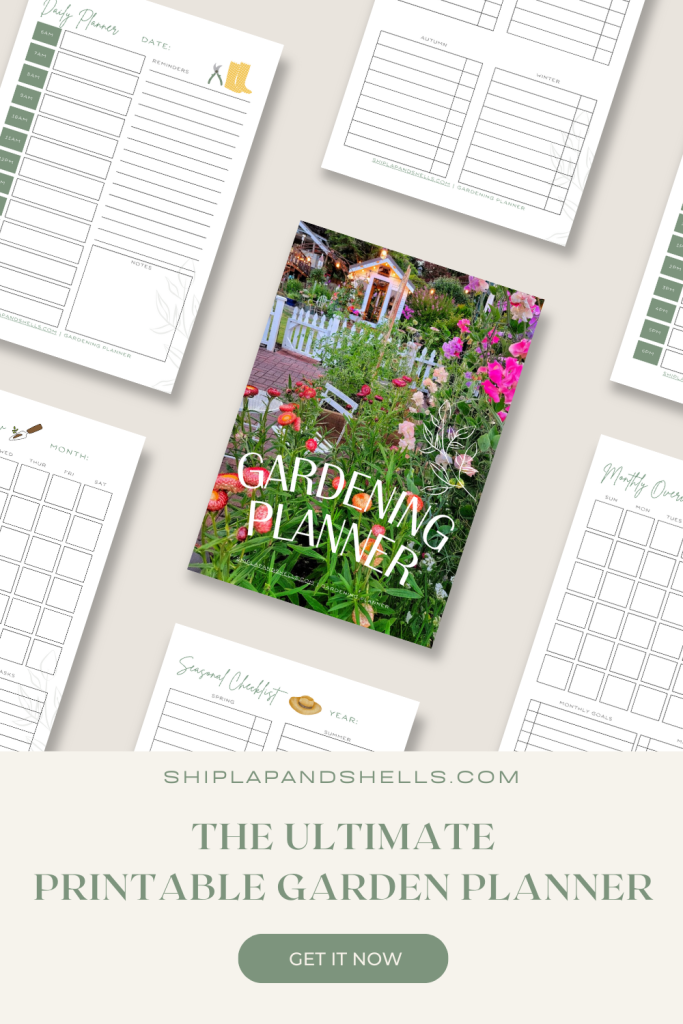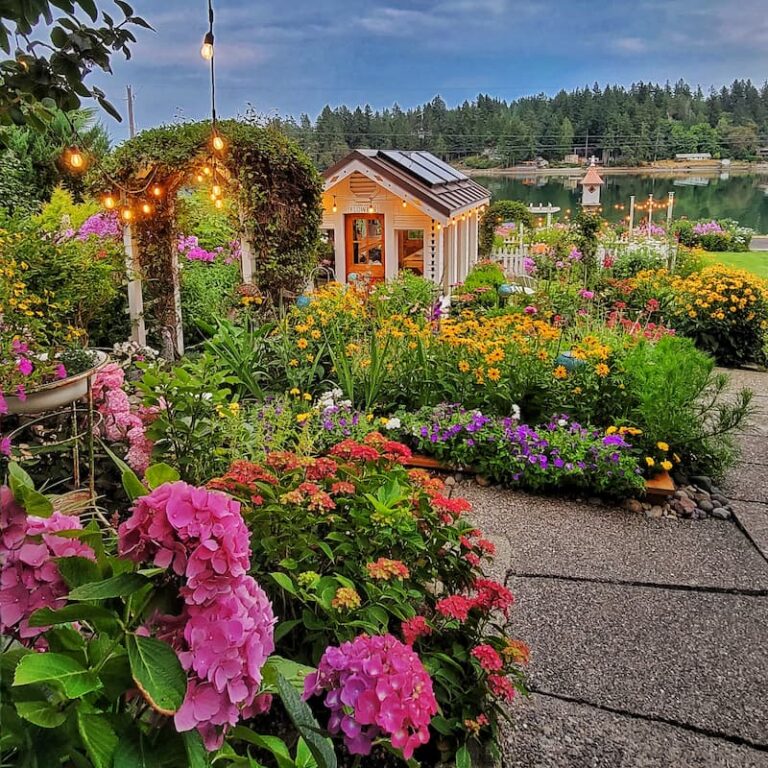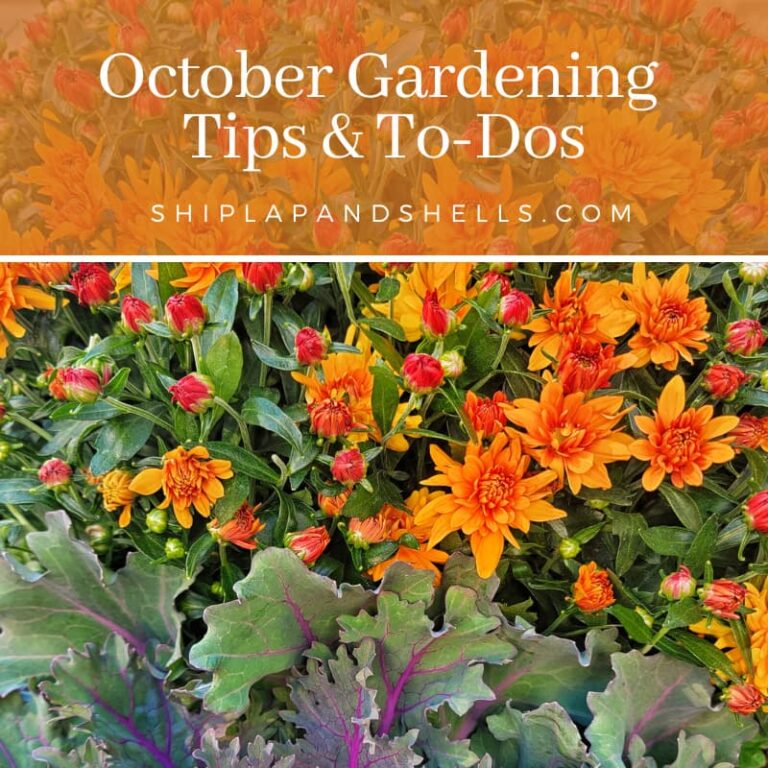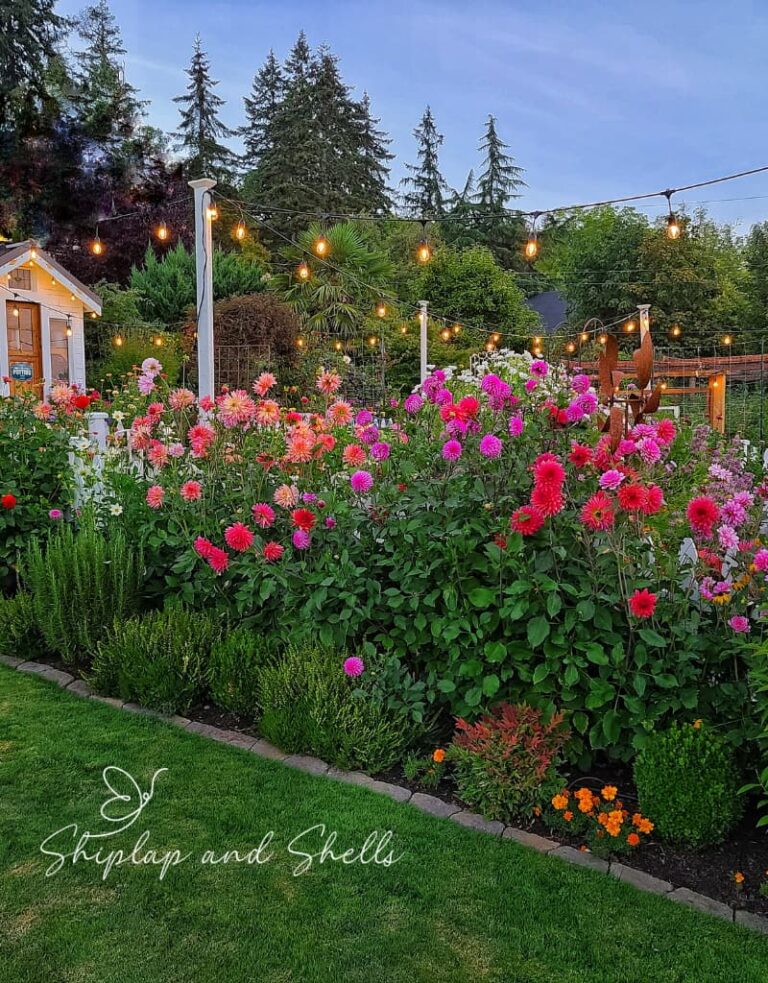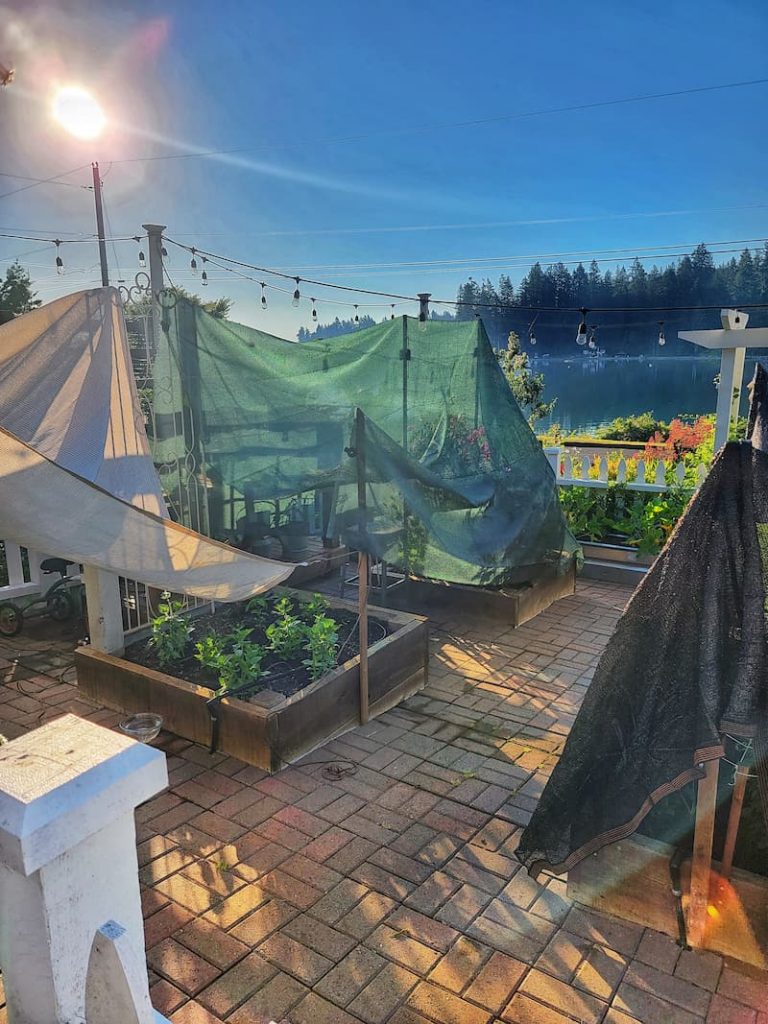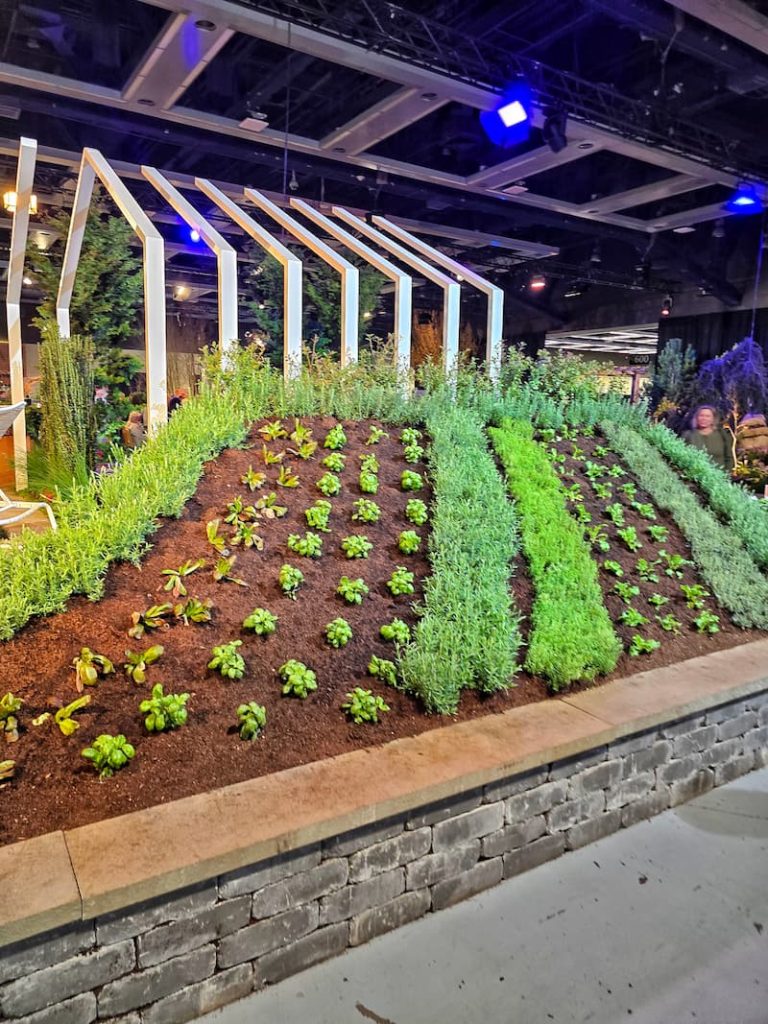Maintaining a Cut Flower Garden for Beginners
Do you want to add a pop of color to your garden and bring fresh flowers into your home? Growing a cut flower garden will give you both. Whether you’re a new gardener or have a green thumb, these easy tips will help you maintain a healthy and thriving cut flower garden.
If you’re reading this blog post, it’s probably because you love flowers as much as I do. Growing a fabulous flower garden is exciting, right? There’s so much beauty and joy to look forward to. And think of all the garden therapy you’ll be getting!
You don’t have to have a big outdoor space to grow flower gardens, and it’s easier than you think. Trust me—if I can do it, anyone can. I started mine for the first time, knowing nothing! I learned everything from books and the internet.
The nerve-racking part about growing a cutting garden can be figuring out how to keep those stunning flowers producing and staying healthy throughout the growing season.
I’ve got you, flower friend! Follow along as I share this beginner-friendly guide to cut flower garden care.
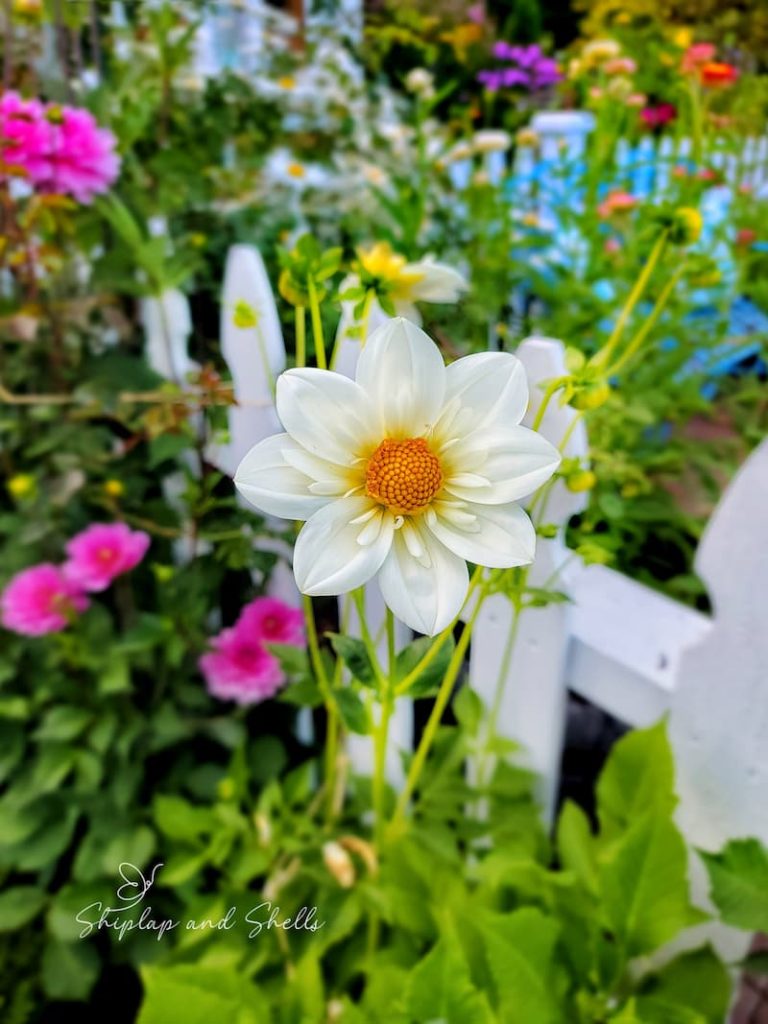
As an Amazon affiliate, I earn from qualifying purchases at no extra cost to you. My blog contains other affiliate links for your convenience as well. Click here to read my privacy policy.
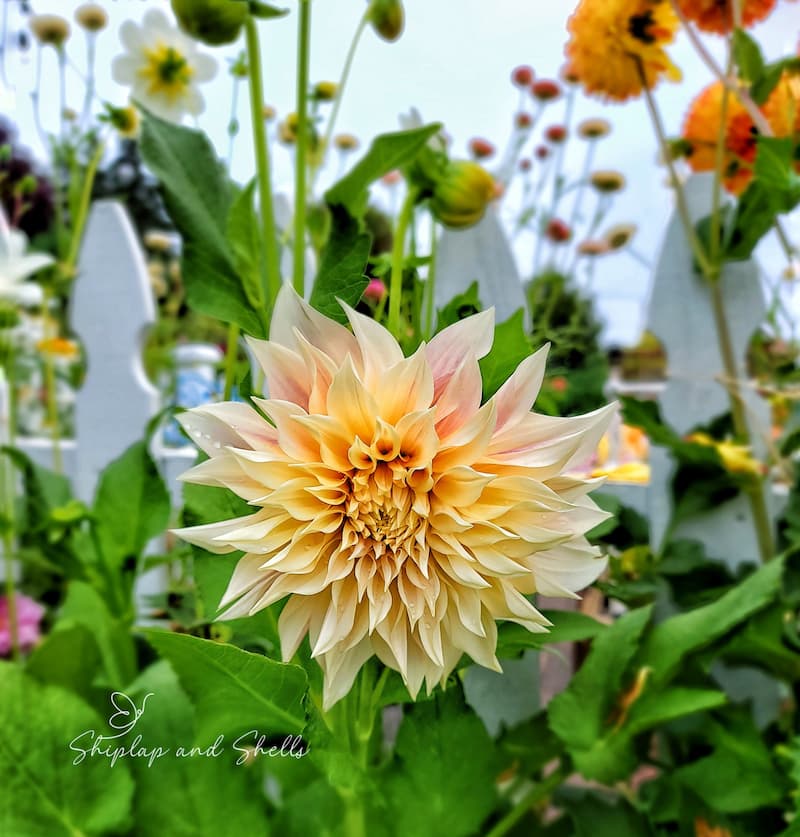
How to Take Care of a Flower Garden
The purpose of a cutting garden is to have a dedicated garden space specifically for growing flowering plants for cut flowers. In the summer months, you’ll be able to enjoy growing your own beautiful blooms to create breathtaking bouquets.
There are several secrets to maintaining and caring for a beautifully thriving cut flower garden, and we’ll talk about all of them:
Seed Starting Supplies
Check out my favorite supplies and tools for starting seeds indoors. Whether you’re looking for grow lights or a seed starting mix, you’ll find what I use in my own greenhouse.
Assessing Your Garden Maintenance Needs
Did you know that daily walks through your cut flower garden can be important for its maintenance needs? Awareness of what’s happening in your garden space is key to keeping it healthy and productive.
By evaluating your garden’s needs, you can give your flower garden the care and attention it needs to help your summer flowers thrive throughout the season.
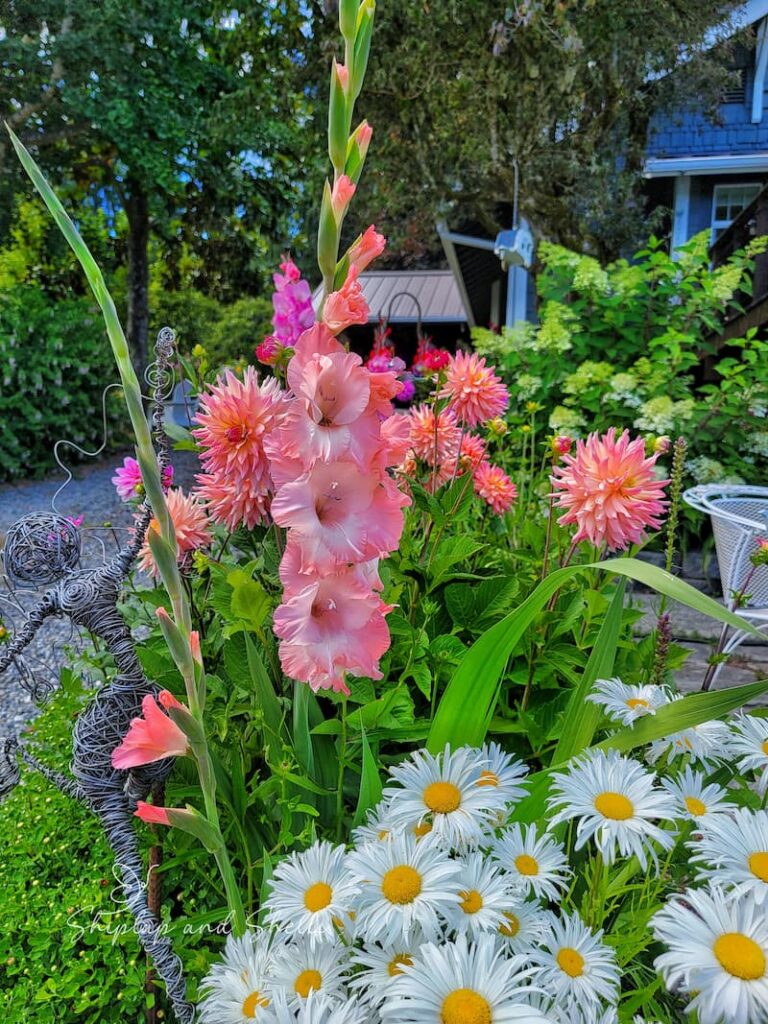
Evaluating Soil Moisture and Fertility Requirements
Understanding the fertility requirements of your flowers will help you provide the necessary nutrients for a successful cut-flower garden. The best way to do that is by performing a soil test to determine the pH level and nutrients of the soil.
The USDA website states that your local Extension Service is the best resource for testing soil in your garden. But you can also perform your own soil test very easily!
A soil test detects nutrient deficiencies and provides information on soil acidity. After your test results, amend your flower bed soil with organic matter, compost, or specific fertilizers to provide the right foundation for your summer flowers.
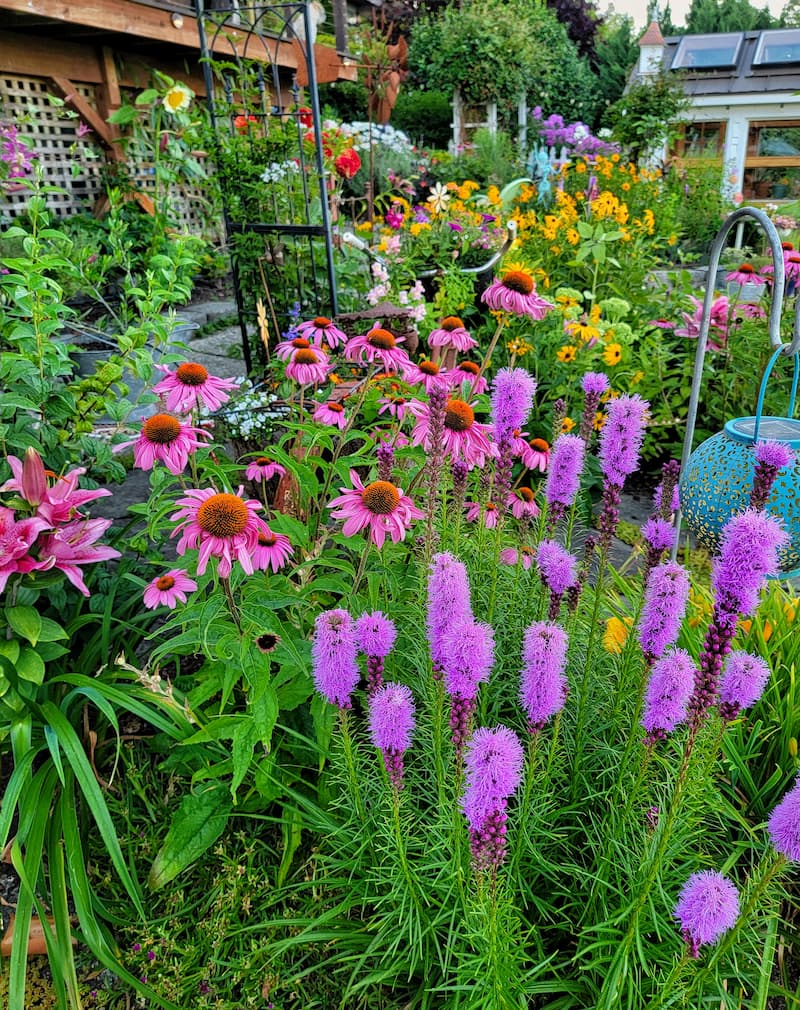
Paying Attention to Sunlight and Shade Patterns
Different flower varieties have varying sunlight requirements, so it’s important to understand the lighting conditions in your garden.
Sun-loving cut flowers need a sunny spot in the garden with at least six hours of direct sunlight, while varieties requiring shade thrive in areas with limited sun exposure.
Spend time watching the patterns of sunlight and shade throughout the day to identify which outdoor areas receive full sun, partial shade, or deep shade. Select flowers that match these sunlight requirements for optimal growth.
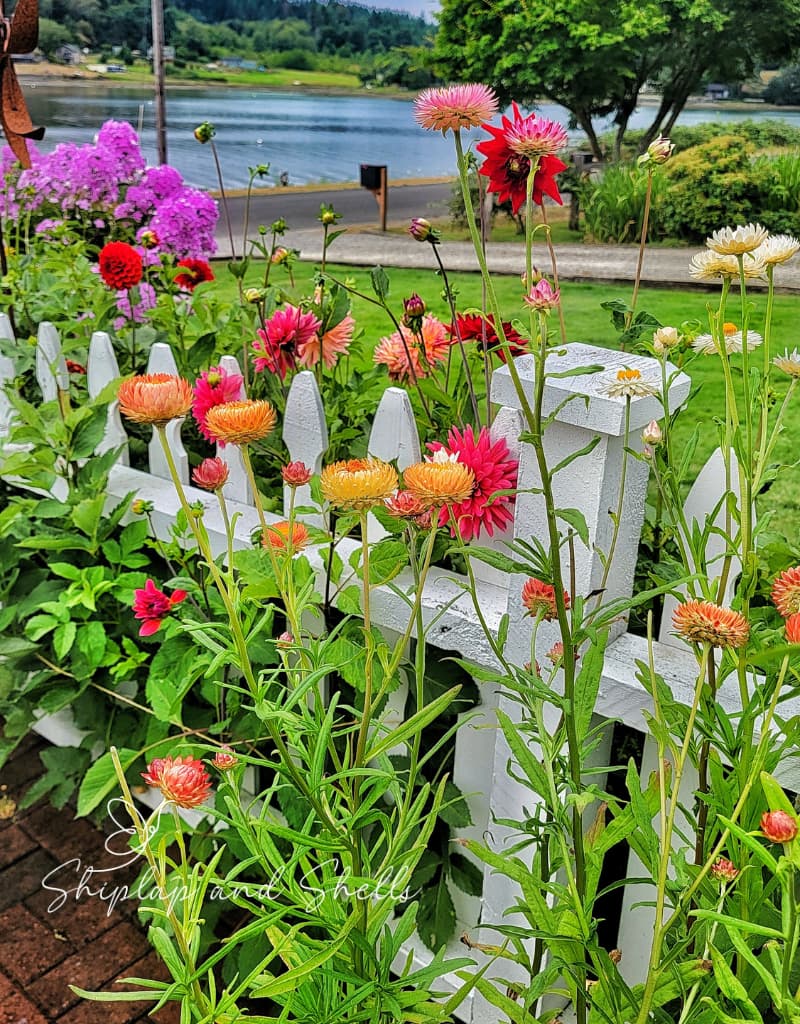
Considering the Impact of Local Climate and Weather Conditions
Choose flower varieties that are compatible with your garden’s hardiness zone.
Knowing your area’s weather patterns can help you prepare for challenges like heat waves, droughts, or heavy rainfall. Select flowers that can withstand and adapt to these conditions.
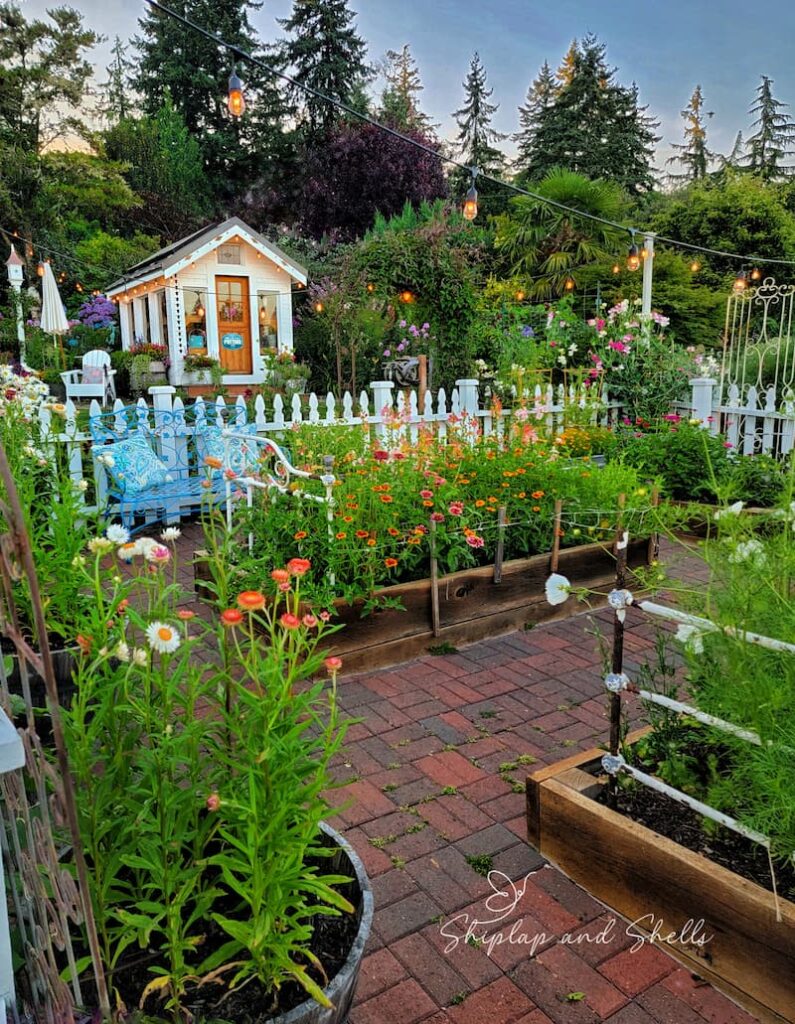
Watering Your Cut Flower Garden for Optimal Growth
Your cut flower garden’s success has much to do with your watering efforts. Finding the right balance to avoid over or under-watering is especially important.
Watering frequency can depend on several factors, including the weather, the soil type, and the specific needs of the flowers you’re growing.
How Often Do You Water a Cut Flower Garden?
Providing the right water balance is an essential step for flower garden maintenance. Over- and underwatering can damage your plants.
The watering frequency of your garden beds will vary depending on soil type, weather conditions, and the specific type of plant you’re growing. Overwatering can lead to root rot, fungal diseases, and the washing away of nutrients. Underwatering can leave plants wilted and stressed, stunting their growth.

Determining When to Water Your Garden Flowers
By monitoring the moisture levels in your soil, you can ensure that your plants receive the right amount of water to thrive and stay healthy.
Start by regularly checking the moisture level of your garden soil, especially during hot and dry periods. Use a moisture meter or stick your finger into the soil a few inches to check moisture levels before watering. If it feels dry, you’ll need to water.
During hot, dry periods, this might mean watering every day or every other day. Cloudier weather might require less frequent watering.
Visual cues like wilting leaves or dry-looking soil in the garden beds are other sure signs that your garden needs more water.
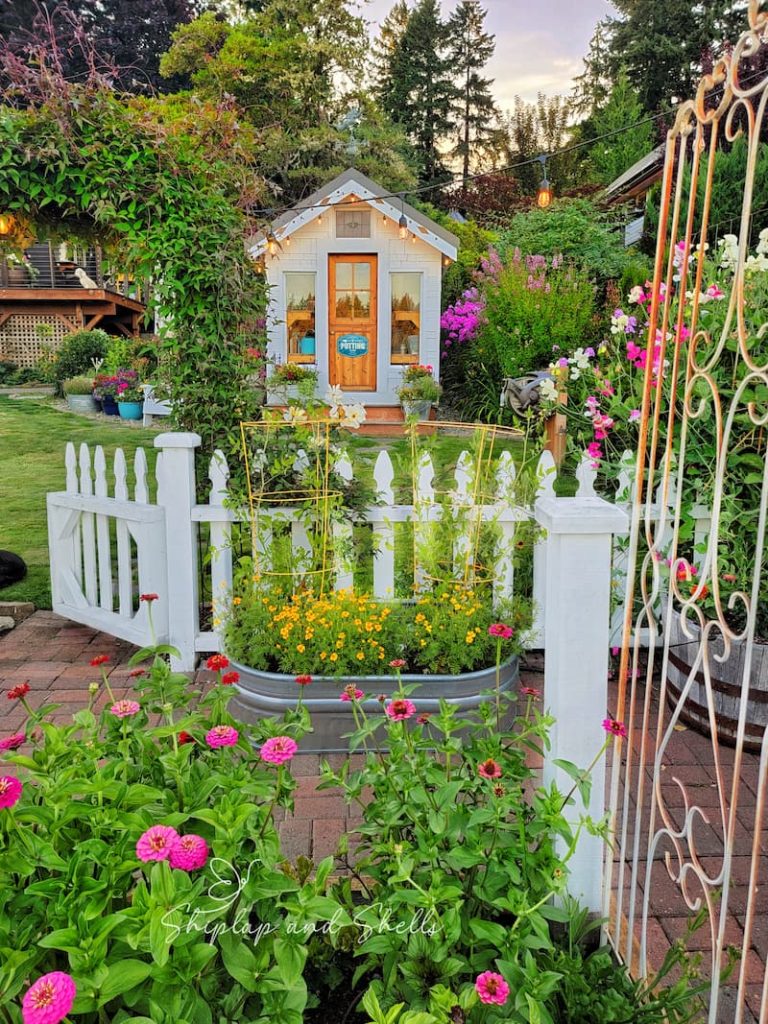
Techniques for Deep Watering to Encourage Root Development
Flower garden care involves watering your planting beds deeply and infrequently. This allows the water to penetrate the soil and reach the roots, encouraging them to grow deeper into the soil.
Surface watering can result in shallow root growth, making plants more susceptible to stress and drought. Deep watering encourages roots to grow deeper into the soil, receiving moisture and nutrients more effectively.
If possible, set up a drip irrigation system or soaker hoses to deliver water directly to the root zone. This allows the water to reach the lower layers of soil, where roots can access it. This method reduces water waste and minimizes the risk of foliage diseases.
Another method is to water slowly and deeply, using a watering can or garden hose with a gentle flow. Apply water at the base of the plant, allowing it to soak into the soil gradually.
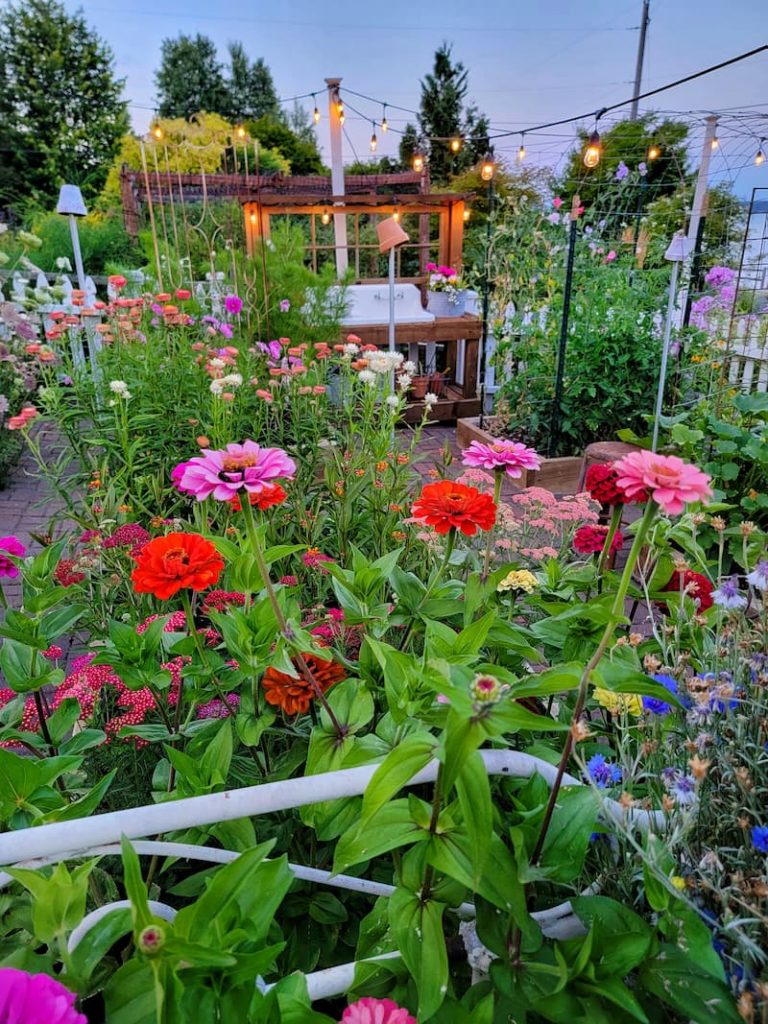
Other Watering Tips
Choose Flowers Meeting Your Garden Needs
Keep in mind that different plants have different watering needs. Some flowers might require more water, while others prefer drier conditions. Adjust your watering schedule based on the specific needs of your flower varieties and the current weather conditions.
Add Mulch to Your Garden Beds
Applying a layer of mulch around your plants can help retain soil moisture, reduce the need for frequent watering, and keep the soil temperature consistent.
Water Your Garden Annuals and Perennials in the Morning
Water your garden flowers in the early morning to reduce evaporation and allow the water to soak deeply into the soil, reaching the roots where needed most. Morning watering also helps prevent the leaves from staying wet overnight, which can lead to fungal diseases.
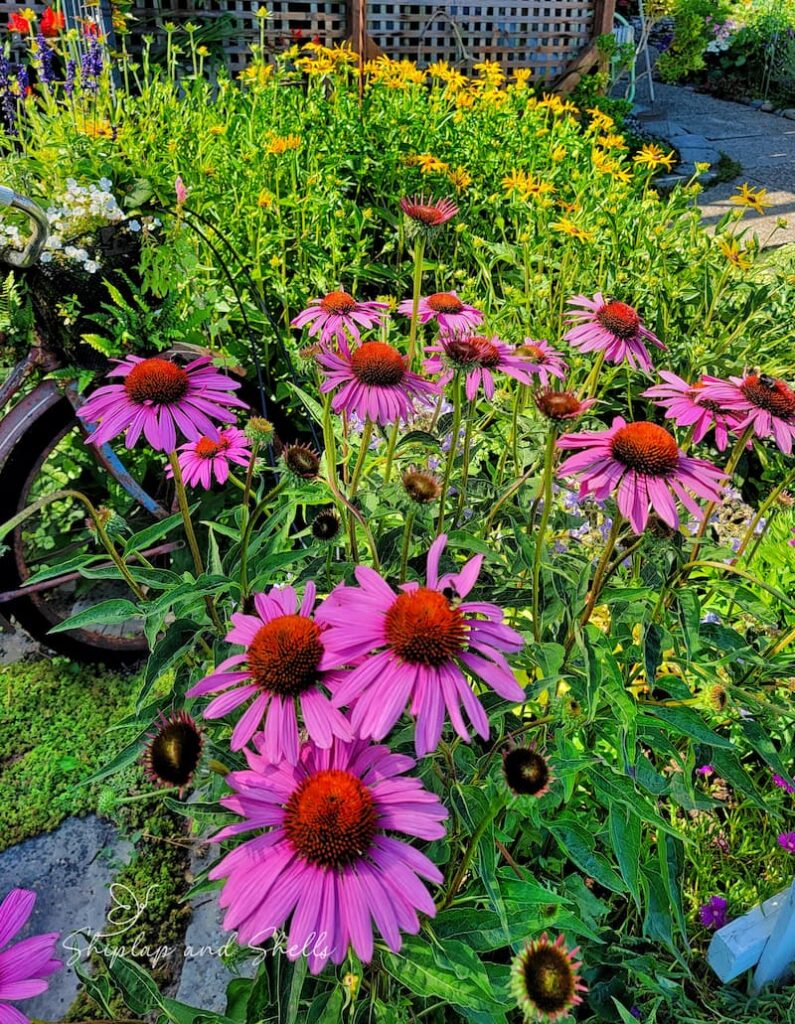
Soil Quality is Important for Growing Cut Flowers
Healthy soil is the foundation for a thriving cut flower garden. Before choosing the best cut flowers for your garden, consider soil pH, drainage, and nutrient levels.
As mentioned above, a soil test should be conducted to determine which amendments need to be added to replenish nutrients, such as organic matter, compost, or special fertilizers, to create an optimal growing environment.
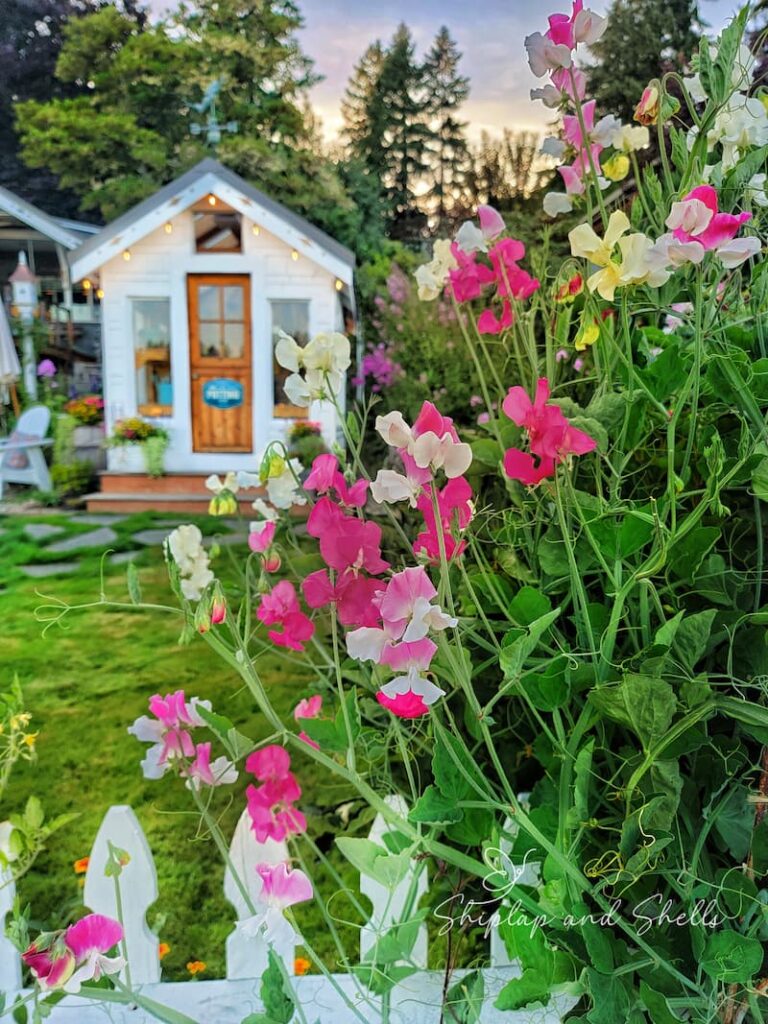
Feeding Your Cut Flower Blooms
Your cut flower blooms need essential nutrients to thrive. Let’s look at the timing and techniques you need to produce stunning blooms throughout the growing season.
Importance of Regular Feeding for Vibrant Flowers
Your cutting flowers require a steady supply of nutrients to support their growth, development, and the production of beautiful blooms.
Regularly feeding them through organic matter or fertilizers will:
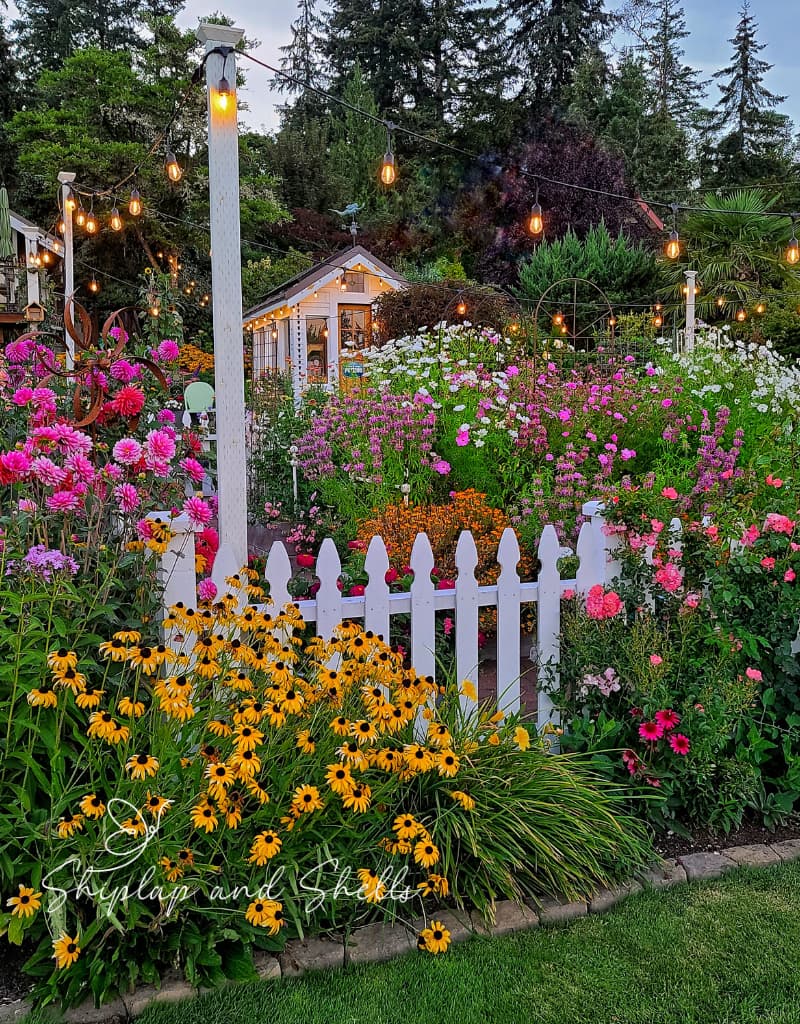
Choosing the Best Fertilizers for Cut Flower Gardens
Different cut flowers have varying nutrient requirements, so you must use the right fertilizer to ensure plants receive the necessary elements to flourish.
Organic Fertilizers
Organic fertilizers, such as compost or well-rotted manure, provide slow-release nutrients and improve soil health.
When using organic fertilizers, spread them evenly and work them into the soil before planting or as a top dressing around existing plants. This will allow the nutrients to be released slowly and nourish the soil and plants over time.
Synthetic Fertilizers
Synthetic fertilizers offer precise nutrient ratios for targeted feeding. Read the labels and follow the recommended application rates to avoid over-fertilizing.
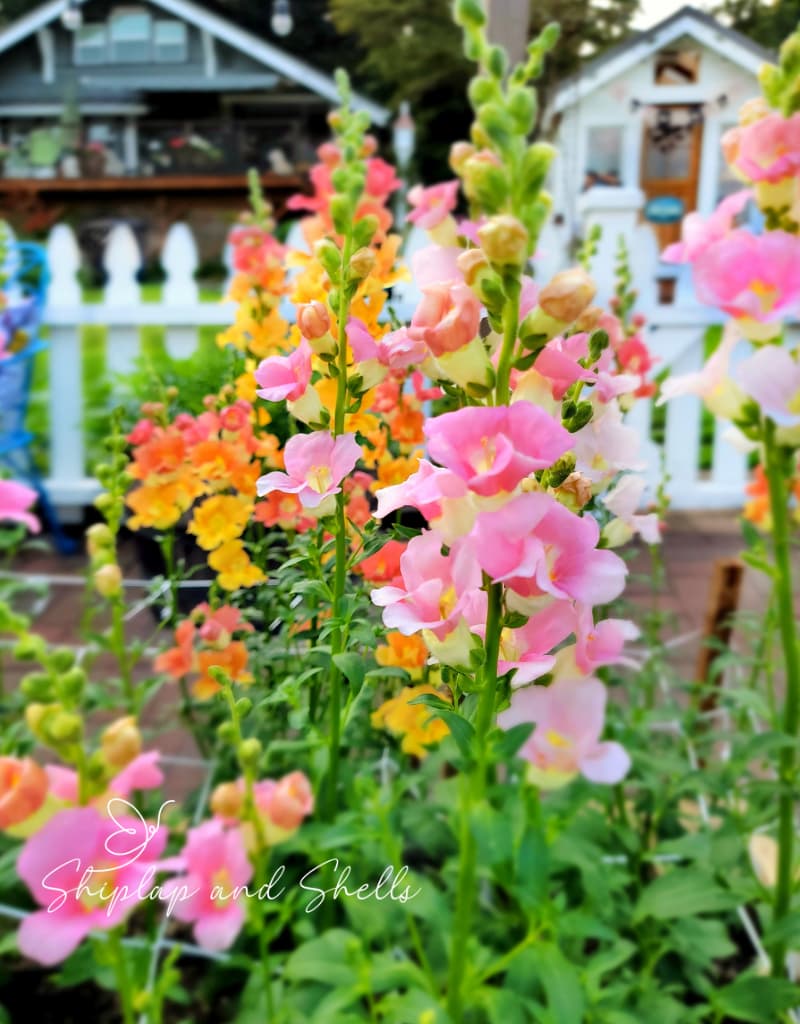
Other Fertilizing Tips
Watering your garden after applying fertilizers helps to activate the nutrients and helps with the absorption by the roots.
Regularly monitor your plants after fertilization and adjust the application as needed.
Composting as a Natural Nutrient Source for Your Garden
Composting is a great way to create a natural nutrient source for your garden. Organic materials such as kitchen scraps and yard waste can enrich the soil with essential nutrients, improve its structure, and promote fertility.
Use compost as a top dressing or mix it into the soil to provide a slow-release, sustainable source of nutrients for your plants.
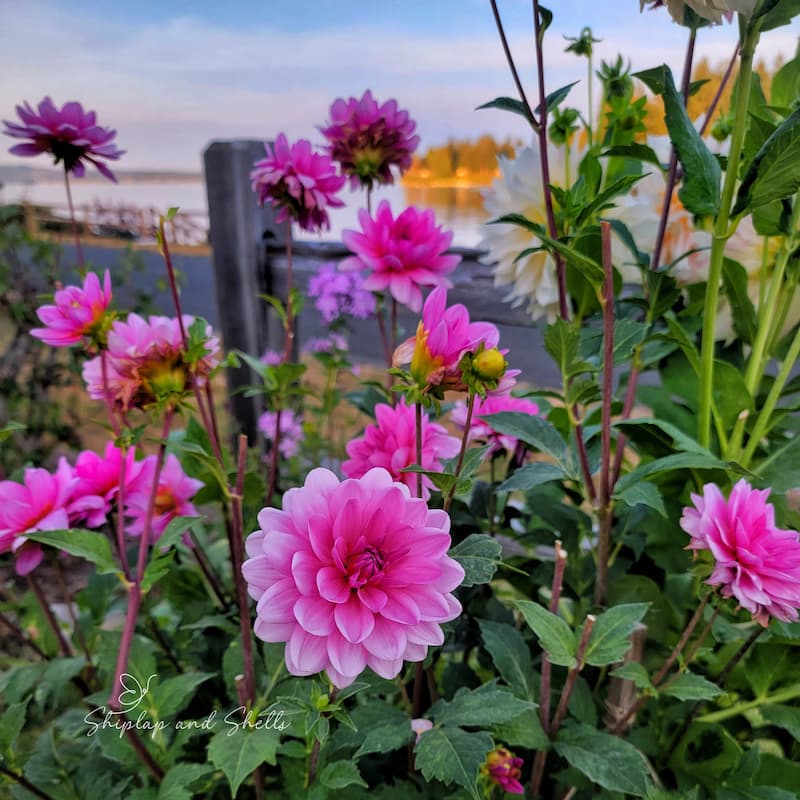
Protecting and Managing Pests and Diseases from Your Cut Flowers
Caring for fresh cut flowers includes controlling pests and diseases, which is one of the most important things you can do to maintain your cut flower garden.
Identifying Common Pests that Affect Summer Flowers
Here are a few common pests found in a cut flower garden:

Recognizing Signs of Diseases and Taking Appropriate Action
Removing affected parts of the plant and giving it good air circulation is essential for controlling diseases. There are also organic remedies you can use.
Regular inspections and early intervention are key to preserving the health and longevity of a cut flower garden.
Here are a few common diseases found in a cut flower garden:
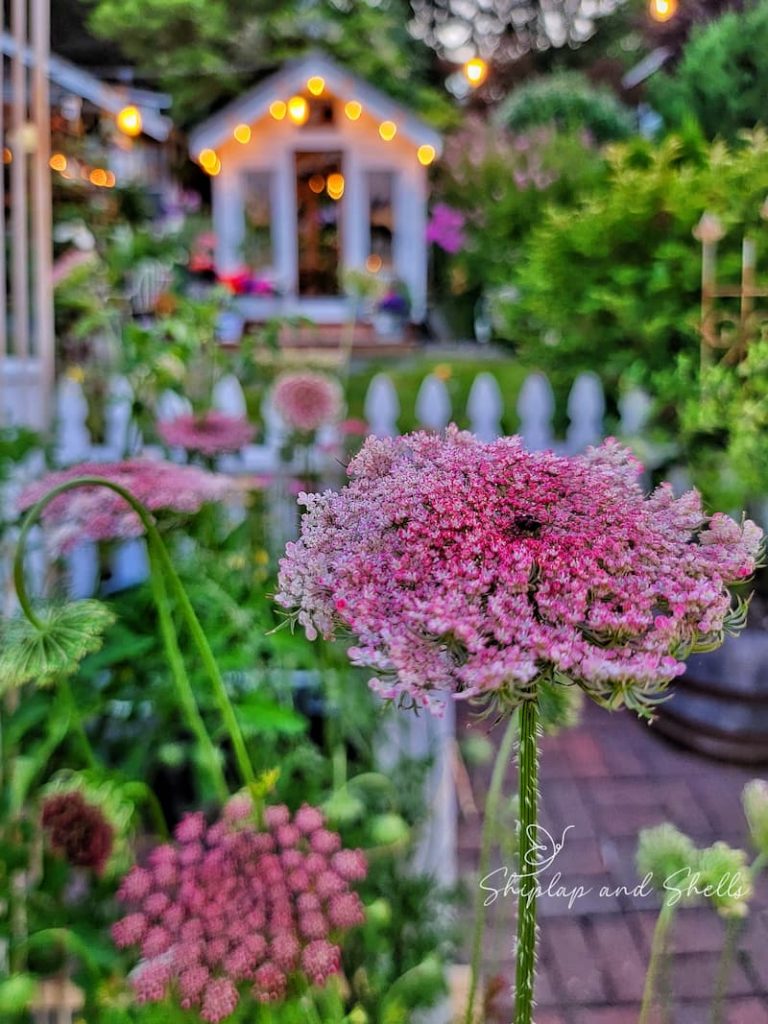
Organic and Natural Pest Control Methods to Protect Your Blooms
Natural and organic pest control methods are eco-friendly for managing pests in your cut flower garden.
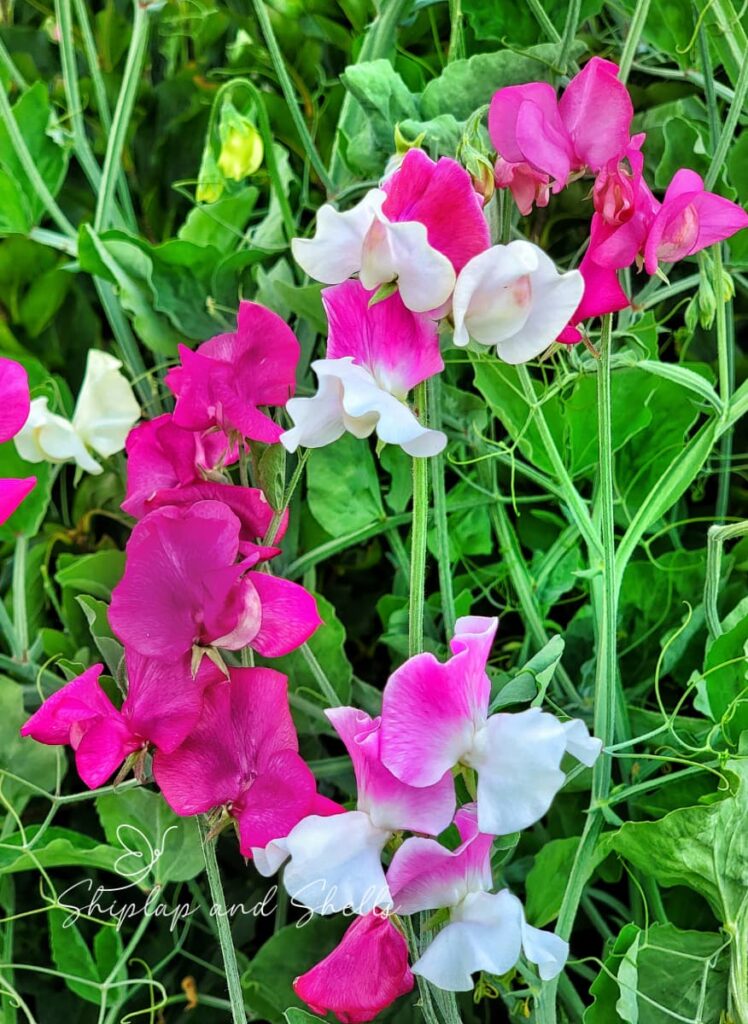
Staking and Support Systems for Your Tall Cut Flowers
Cut flowers, such as sunflowers and dahlias, have tall, slender stems that may not be able to support the weight of their blooms. These stems can break, bend, or collapse under the weight without proper support.
By staking the stems, your stable structure will help them remain upright and protect them from wind, heavy rain, or even their blooms.
Choosing Appropriate Staking and Support Methods
Choosing the right methods ensures healthy growth and prevents damage to plant staking and support systems.
Here are some of the support methods you can choose from:
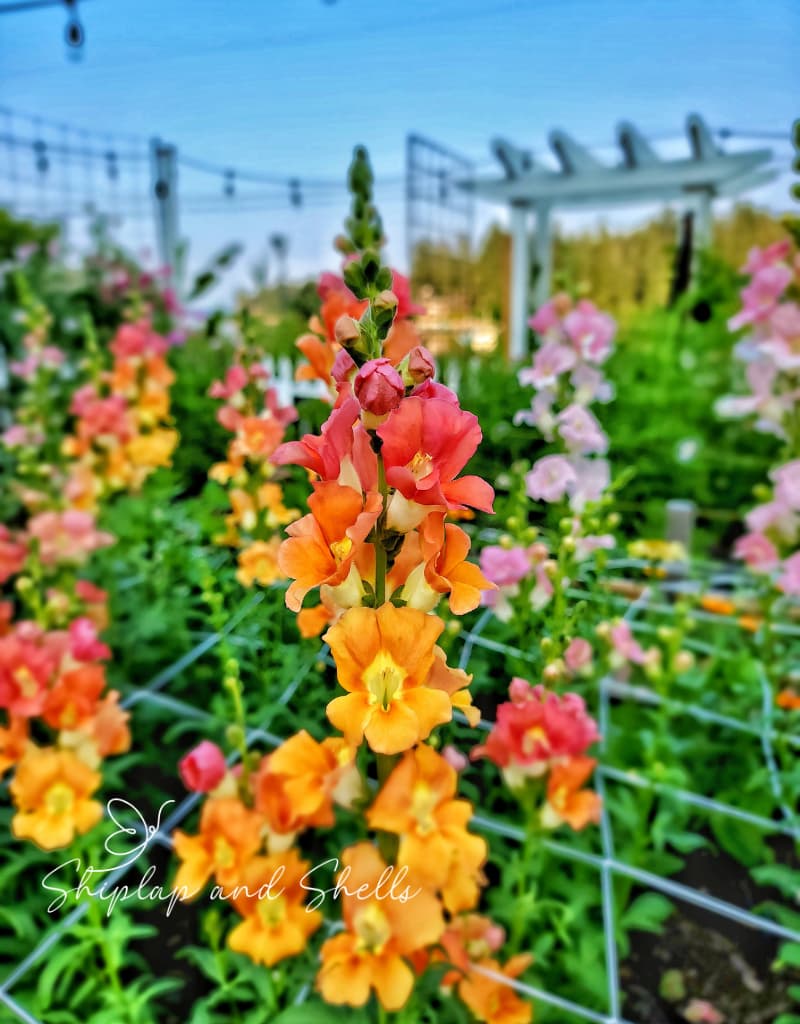
Implementing Support Systems Without Damaging the Plants
When supporting cut flower plants, it’s important not to damage them. First, the support structure should be set up while the plants are still young and not at full growth. Then, you can adjust as they grow.
Drive stakes or install trellises firmly into the ground, ensuring no damage to the roots or stems. Use soft ties or plant-friendly clips to secure plants gently.
As part of your flower bed maintenance, regularly check and adjust the supports as the plants grow and develop to accommodate their increasing height or weight.
‘Growing a Cut Flower Garden’ Series
Learn about the ins and outs of growing a cut flower garden this year. Click the button below to be taken to the entire series of blog posts and choose what is interesting to you.
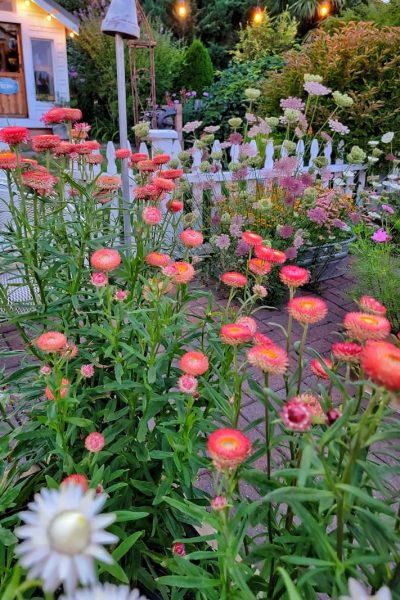
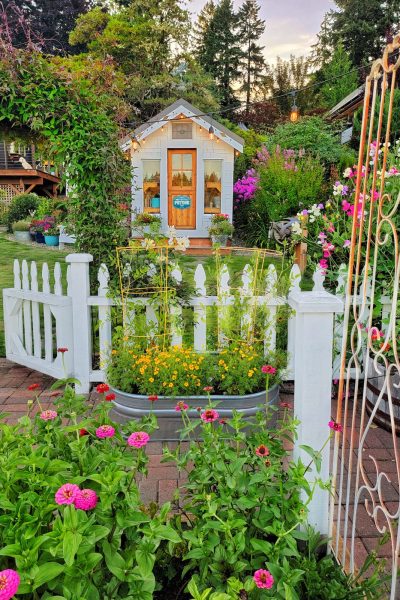
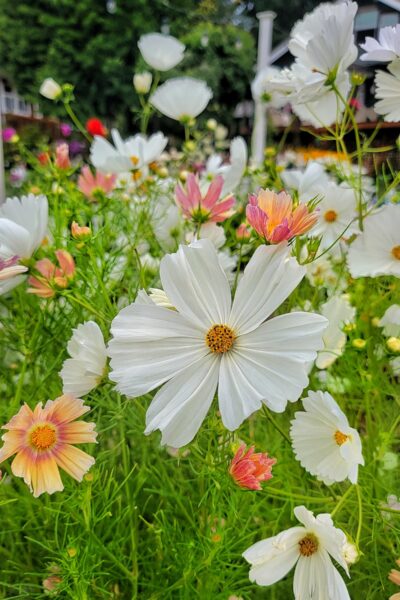
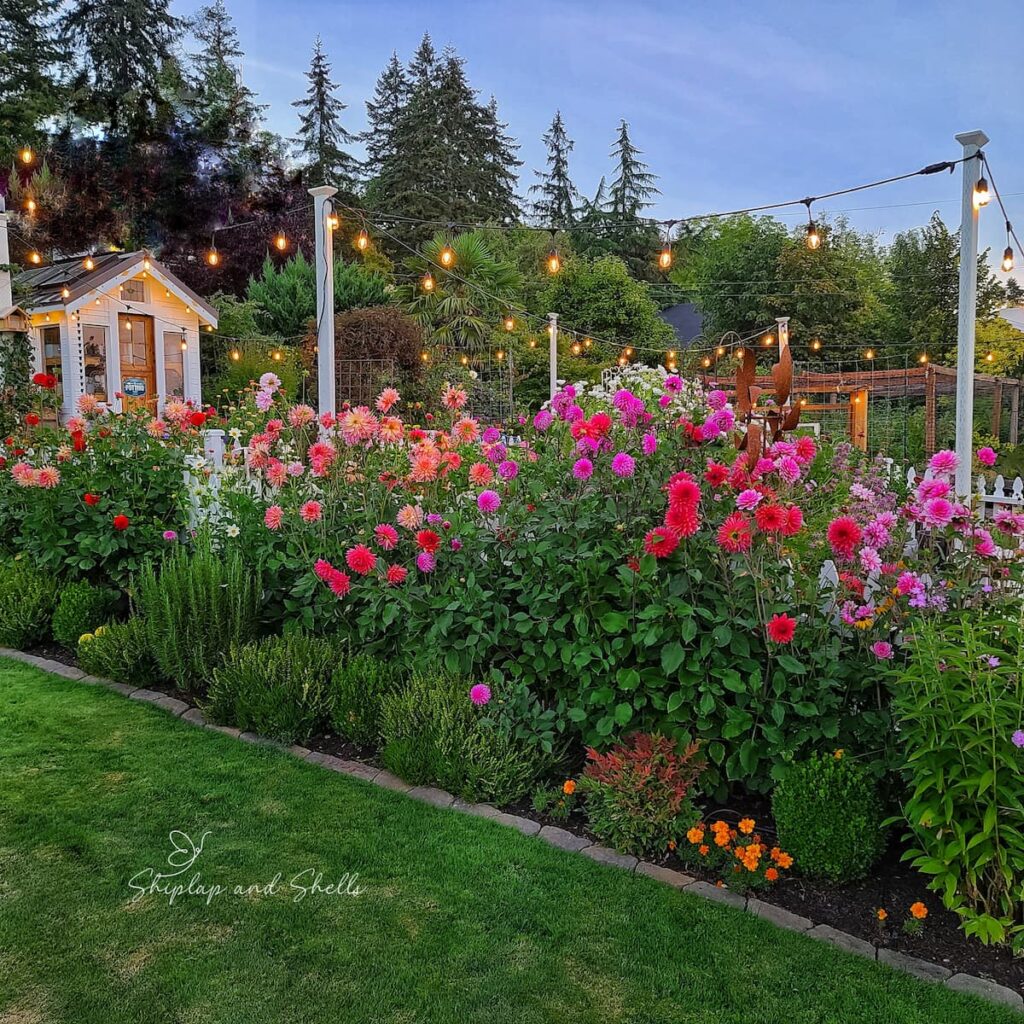
Flower Bed Maintenance: Mulching and Managing Weeds in the Flower Garden
Mulching and managing weeds are important for gardening and maintaining healthy cut flowers. Here are some mulching and weed management tips for beginning flower growers to maintain weed-free flower beds throughout summer.
Mulching Techniques to Suppress Weeds and Retain Moisture
Applying a layer of mulch around flowers is an effective way to suppress weed growth and retain moisture.
Organic mulch such as shredded leaves, wood chips, and straw will create a barrier that blocks the sunlight, preventing weed seeds from germinating. Mulch is also a great way to help regulate soil temperature and moisture.
Have you heard of leaf litter mulch? It’s a thick layer of leaves from trees and other plants spread out and used as a protective covering on the soil surface in gardens, landscapes, and natural ecosystems.
This mulch consists of the leaves that have naturally fallen to the ground, decomposed, and created a layer of organic material. Leaf litter mulch offers several benefits for your garden.
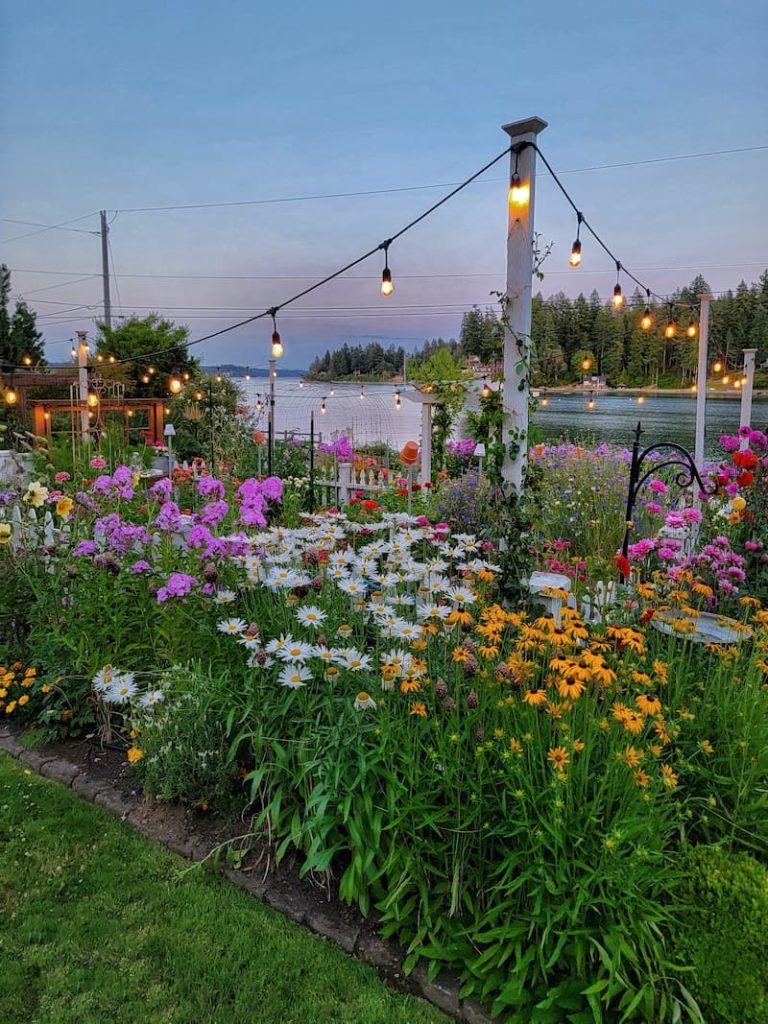
Manual Weed Removal Methods Without Disturbing the Plants
Manually weeding your cut flower garden is an effective and environmentally friendly way to keep weeds away.
Use a hand trowel or a small weeding fork to pull the weeds out from the base, grasping as close to the soil as possible. For weeds with taproots or deep roots like dandelions, use a weeding fork to loosen the soil and gently lift the weed out of the ground. Be careful not to disturb the soil around the other plants in the garden.
If you can, weed when the soil is slightly damp to make pulling the weeds along with their roots easier.

Summer Heat Garden Maintenance
Your blooms and foliage can show signs of stress under the scorching heat. Summer heat garden maintenance is an art that blends observation, timely intervention, and the implementation of heat-beating strategies to ensure that your garden survives and thrives during the hottest months.
In this section, we’ll look at the essential practices of watering, mulching, shade provision, and choosing heat-tolerant plants.
Mulching for Temperature Regulation and Moisture Retention
In hot weather, mulch acts as insulation, preventing excessive heat from penetrating the soil and stressing the plant roots. It also minimizes temperature fluctuations, providing a more stable environment for plant growth.
By applying a layer of organic mulch, such as wood chips, straw, or shredded leaves, gardeners can create a protective barrier that helps regulate soil temperature.
Mulching helps retain moisture by reducing evaporation from the soil surface. This is especially important during dry periods or regions with limited water availability. The mulch acts as a shield, preventing water loss and preserving soil moisture for the plants’ roots.
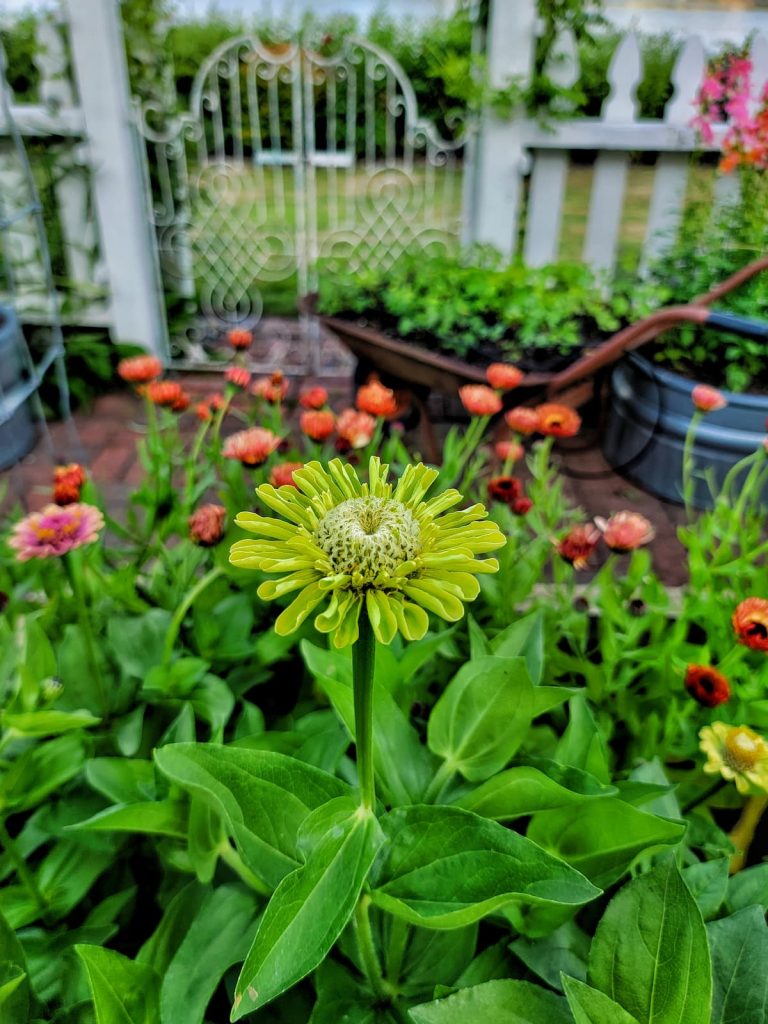
Proper Watering Practices to Combat Heat Stress
The key to proper watering is to water deeply and infrequently rather than shallowly and frequently. This will encourage plants to develop deep root systems that can access water stored deeper in the soil.
Watering in the early morning is ideal to allow plants to absorb moisture before the heat of the day. Target the base of the plant rather than spray the foliage to help prevent fungal diseases.
Regularly monitor soil moisture levels to check the soil for dryness and determine if your plants need watering.
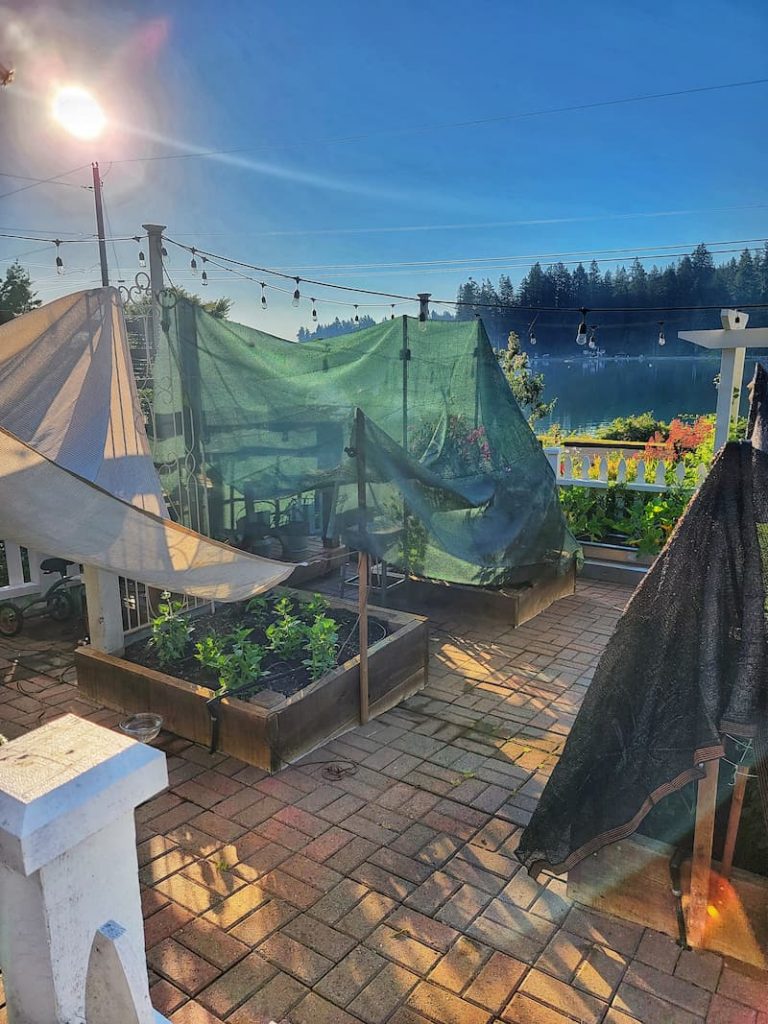
Shade and Protection Options for Sensitive Plants
Providing shade and protection from sensitive plants is crucial to protect them from excessive heat, intense sunlight, or harsh weather conditions.
One option is to create natural shade by strategically planting taller or wider plants nearby to offer shade and reduce direct sun exposure.
Shade cloth or garden umbrellas can also provide temporary shade during the hottest part of the day. Place them over the most sensitive and vulnerable plants or an entire garden bed.
We’ve added shade structure poles with EMT (electrical metallic tubing) pipe to our cut flower garden raised beds that can be lifted out whenever we’re not using them. These structures can support shade cloth or netting, offering long-term protection.
Place delicate plants under trellises, pergolas, or arbors to provide shelter and a shaded environment.
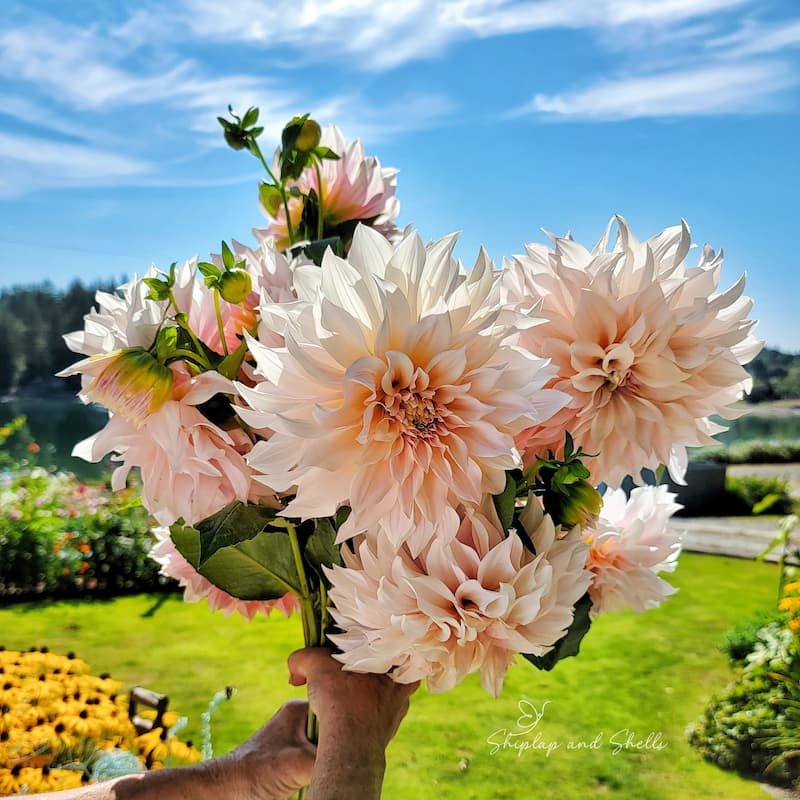
Pruning, Deadheading, and Harvesting Techniques
Caring for fresh cut flowers includes regular pruning, which helps control growth and prevent plants from becoming overgrown and unhealthy. The technique involves removing dead or damaged branches and trimming back excessive growth.
Pruning Strategies for Specific Flower Types
There are different pruning strategies for specific flower types.
Shrubs that bloom on new wood, such as hydrangeas or butterfly bushes, benefit from rejuvenation pruning in early spring. This will encourage vigorous new growth and abundant blooms.
Spring-flowering shrubs like lilac or forsythias should be pruned immediately after flowering to avoid next year’s flower buds.
Deadheading Your Cut Flowers for Continual Blooms
Another form of pruning is deadheading, which involves removing spent flowers. This technique prevents plants from diverting energy into producing seeds and encourages them to produce new flower buds.
By regularly deadheading, gardeners can enjoy an extended blooming season.
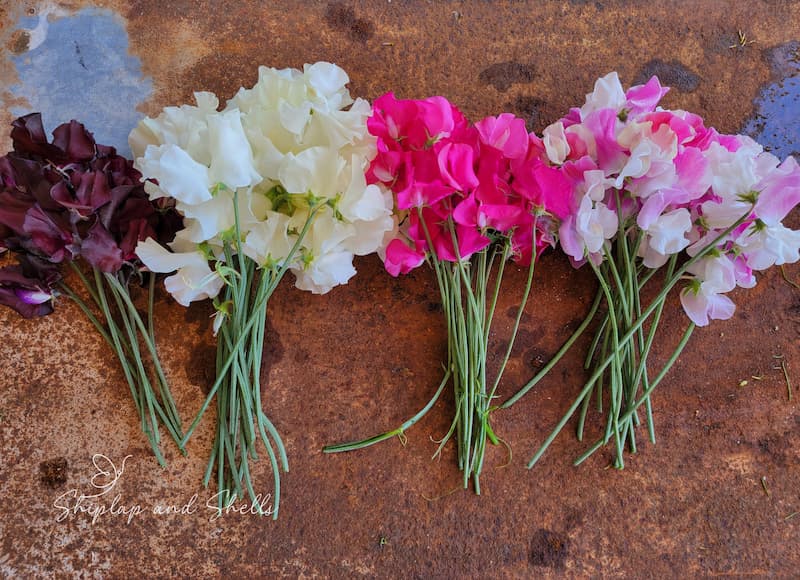
Harvesting Flowers for Bouquets and Arrangements
By selectively harvesting flowers for a bouquet, gardeners can stimulate the plant to produce more lateral branches and blooms.
Use sharp, clean pruning shears or scissors when harvesting to minimize damage to the plant. Place the newly cut stems in a bucket of water to keep them from wilting.
Harvesting should be done early in the morning or late evening when the flowers are well-hydrated.
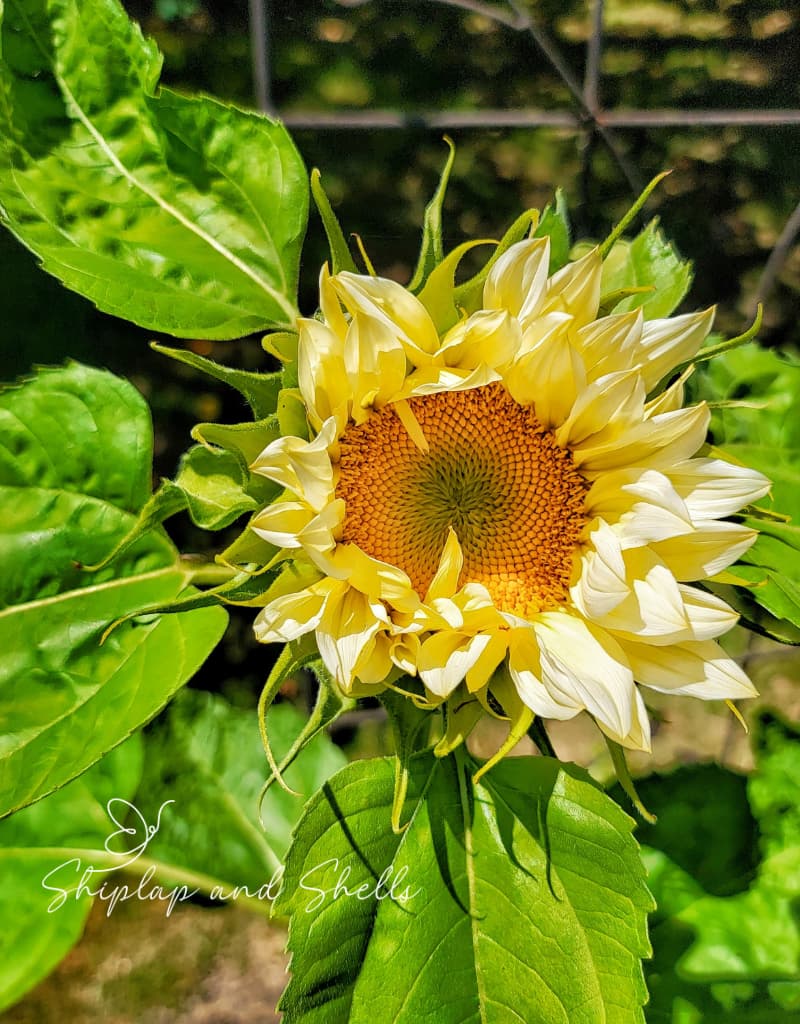
Year-Round Cut Flower Garden Maintenance
The charm of a cut flower garden doesn’t just last a single season. It’s a year-round commitment with rewards through every change in weather.
Maintaining a cut flower garden throughout the year is a journey of continuous care and transformation. Seasonal planning, the importance of soil health, protective measures against the elements, and the joy of selecting flowers are all important steps to growing and caring for a flower garden.
Fall Cut Flower Garden Care
When you put in the effort to prep it for fall, you’re giving your plants a head start to tackle the upcoming cooler months.
Cleaning the garden helps prevent diseases and gives your new plants room to thrive. Trimming back the tired plants allows them to rejuvenate and grow strong for the next year. Adding fresh nutrients to the soil keeps your garden plants healthy.
Read my blog post, “15 Ways to Prepare Your Garden for the Fall Season Transition,” for more ideas.
Preparing a Cut Flower Garden for Winter
Preparing a garden for winter is one of the most important things you can do in the gardening year. Accomplishing certain fall tasks will set your garden up for success for the next season.
Read my blog post, “27 Fall Gardening Tasks to Prepare a Flower Garden for Winter,” to get fall garden checklist ideas, such as overwintering dahlia tubers and planting spring bulbs.
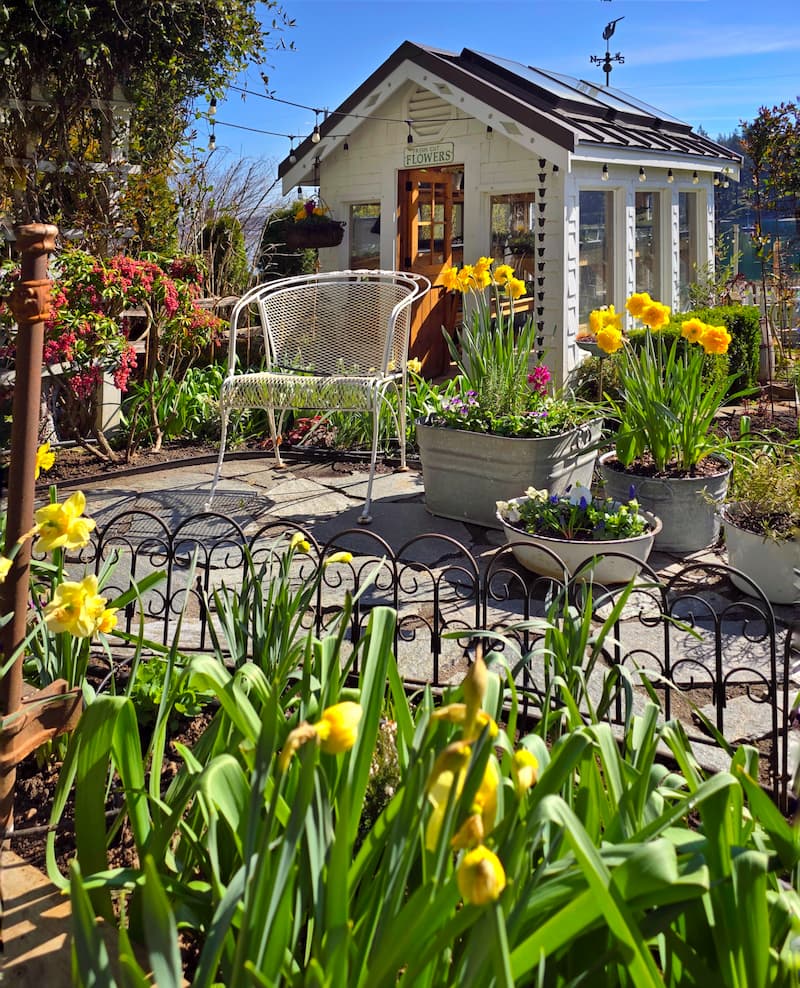
Spring Cut Flower Garden Maintenance
Tackling spring gardening tasks will lay the foundation for a garden that flourishes through the summer and beyond.
With mild temperatures and increased rainfall, spring offers the perfect conditions for planting, pruning, and preparing the soil. It’s the best time for seeds to germinate, roots to strengthen, and plants to establish themselves before the heat of summer sets in.
By cleaning, feeding, and organizing your garden now, you’re setting the stage for plants to withstand pests, diseases, and the summer heat. What you do in the spring initiates a chain reaction of growth, health, and blooming in the garden that lasts all season long.
Read my blog post, “Spring Gardening Checklist to Help the Summer Garden Thrive,” to see what projects will help get you started on the growing season.
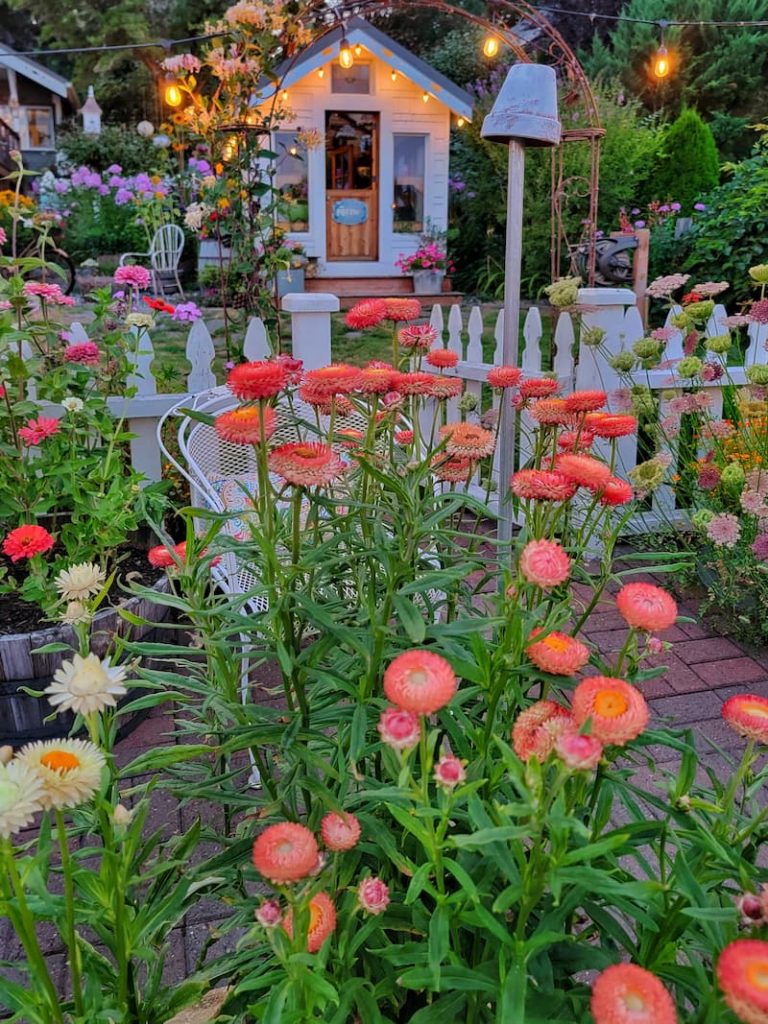
How to Make Cut Flowers Last Longer
Try succession planting at different times for continuous blooms throughout the summer months.
You can also choose to grow cut flower varieties with staggered blooming periods to ensure that flowers are always in the garden beds throughout the growing season.
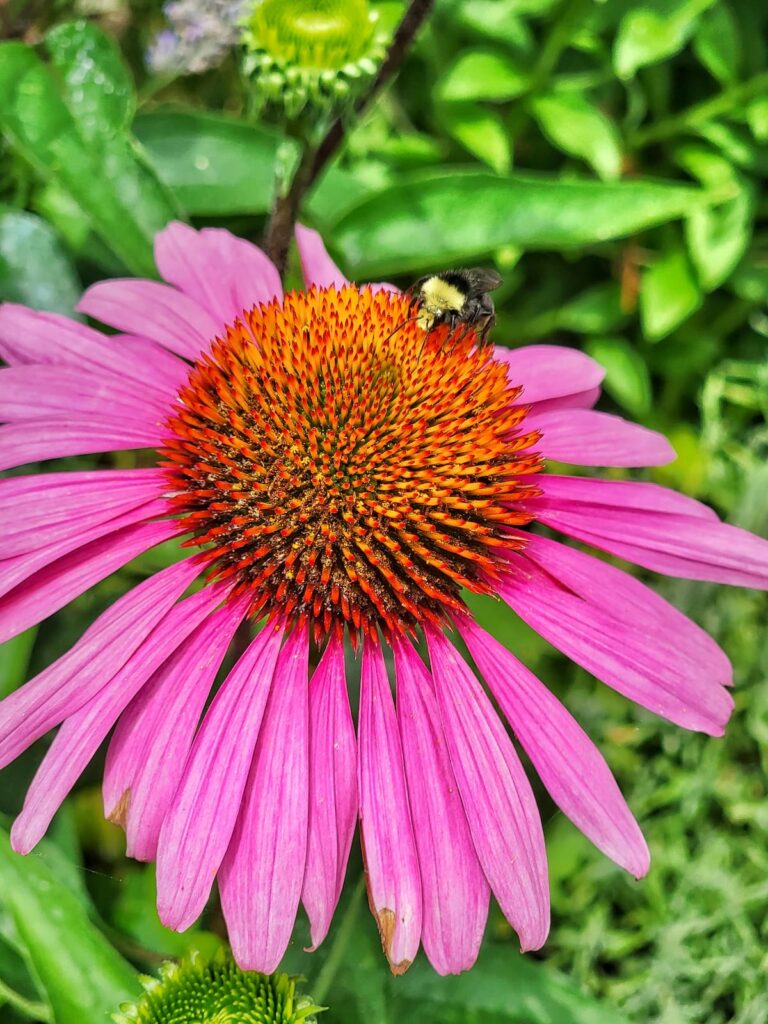
Supporting Beneficial Insects and Pollinators in Your Cut Flower Gardens
Create a welcoming environment for beneficial insects and pollinators in your cut flower garden. Choose flowers that attract them and provide nesting sites and water sources.
Avoid pesticides that can harm beneficial insects, allowing your garden to thrive naturally.
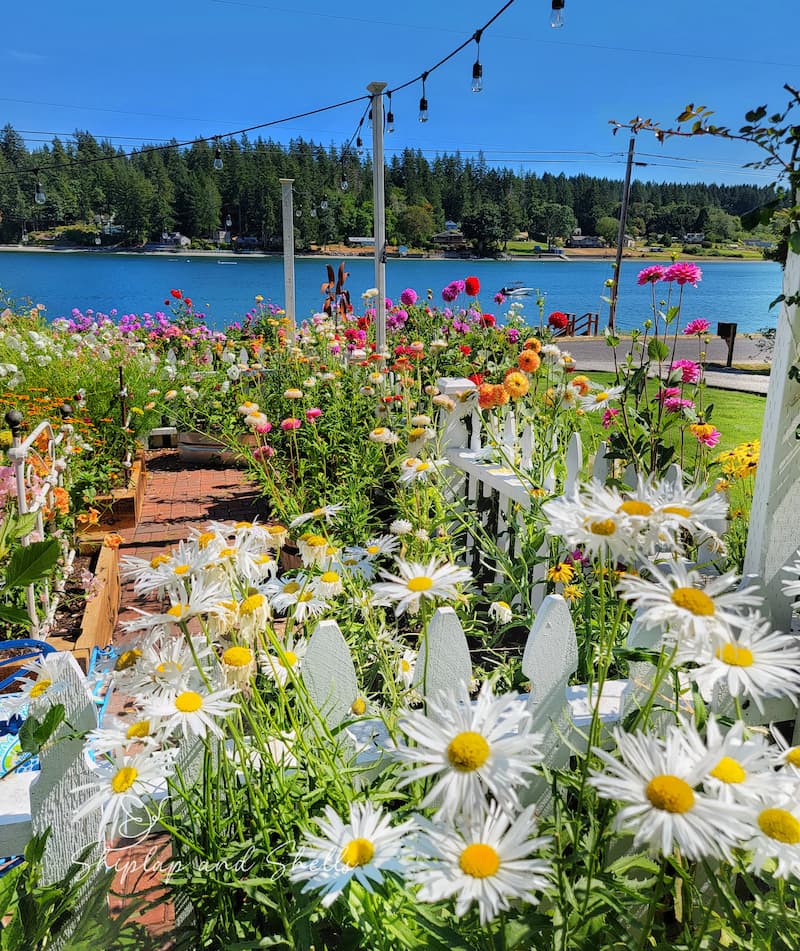
Reflection and Planning for Next Season’s Cut Flower Garden
Reflect on your summer garden to see which flowers performed well and which fell short. Use these insights to plan for the next season.
For me, annual flowers such as zinnias, cosmos, and strawflower will return next year. Summer perennials such as black-eyed Susans (rudbeckia), coneflower (echinacea), and yarrow will be a garden staple year after year.
Consider the bloom times and requirements of different types of flowers to ensure a continuous and beautiful garden throughout the growing season.
Garden Supplies and Tools
Check out my favorite garden supplies and tools for the growing season. Whether you’re looking for potting soil or deer repellent, you’ll find what I use in my own garden.
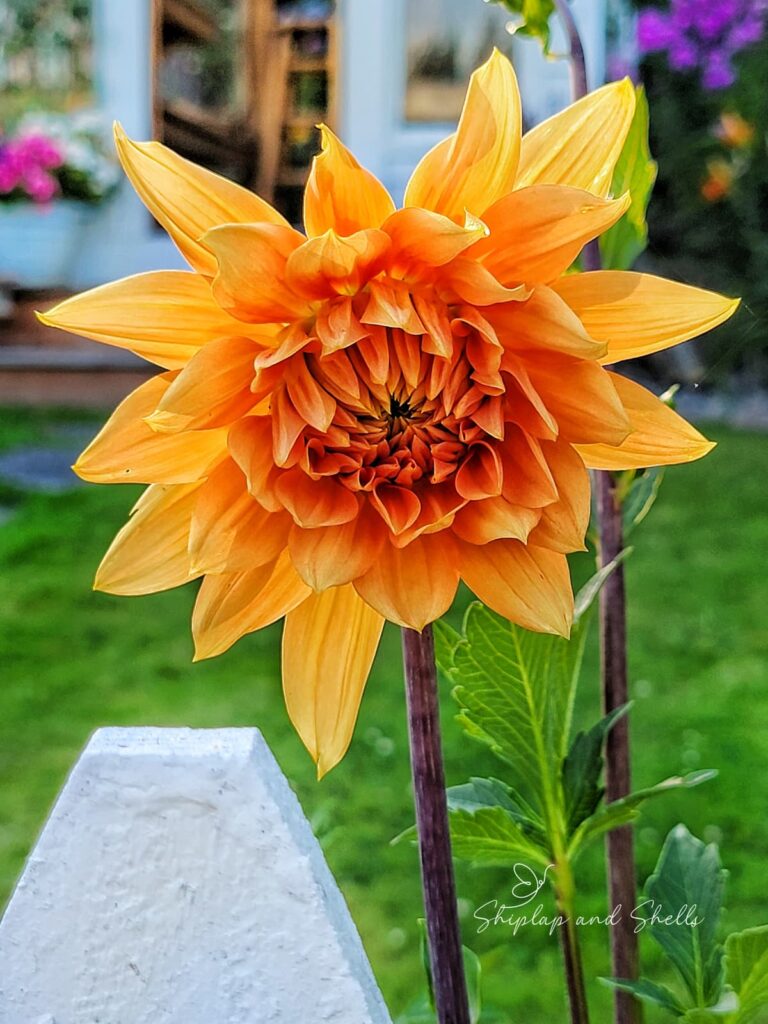
Final Thoughts for Maintaining a Cut Flower Garden
Following these cut flower garden maintenance tips and implementing best practices will give you healthy and gorgeous homegrown flowers throughout the summer. All it takes is a little planning and the right plants.
If you have any questions or additional suggestions, please share them in the comments below. And be sure to share this blog post link with anyone who may find these gardening tips useful.
You can see all my blog posts in the “How to Grow a Cut Flower Garden” series to get even more tips and ideas.
Until next time,
Happy Cut Flower Gardening!

I’m a self-taught hobby gardener. Everything I share on my blog is my opinion and what has worked for me.
More Cut Flower Garden Posts for You
Follow Me for More Inspiration
Shop my Amazon Storefront, LTK sources, and favorite home decor, garden, and lifestyle products. When you purchase from one of my links, I earn a small commission, which helps me continue sharing all the content you expect on my blog.
Be sure to follow me on Pinterest, Instagram, Facebook, TikTok and LIKEtoKNOW.it. Do you like gardening? Join my Facebook Gardening Tips & Tricks group.

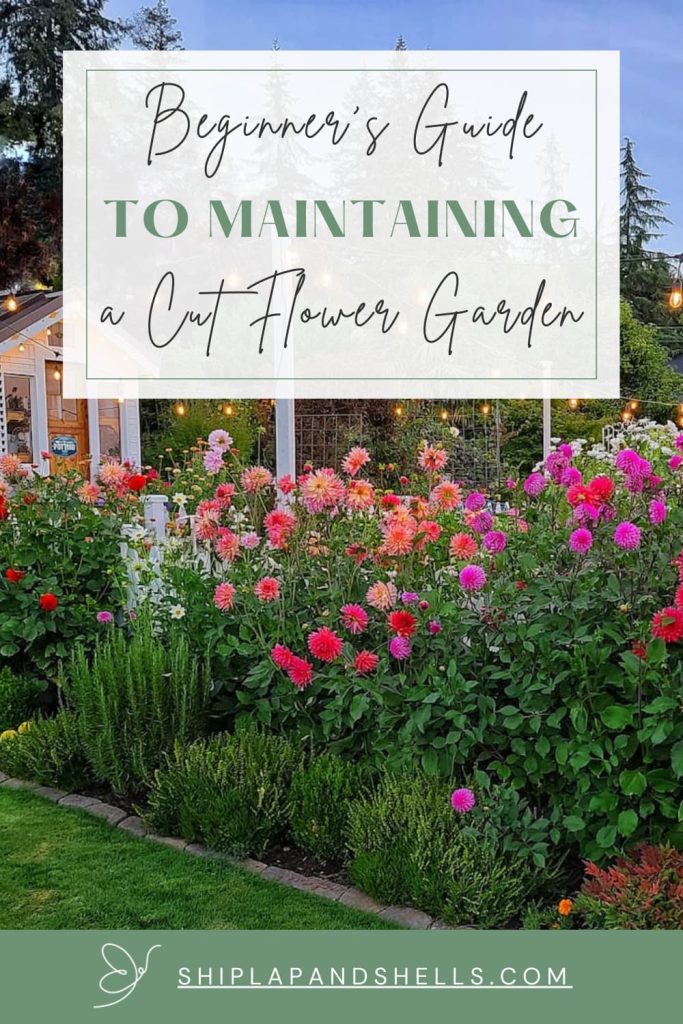
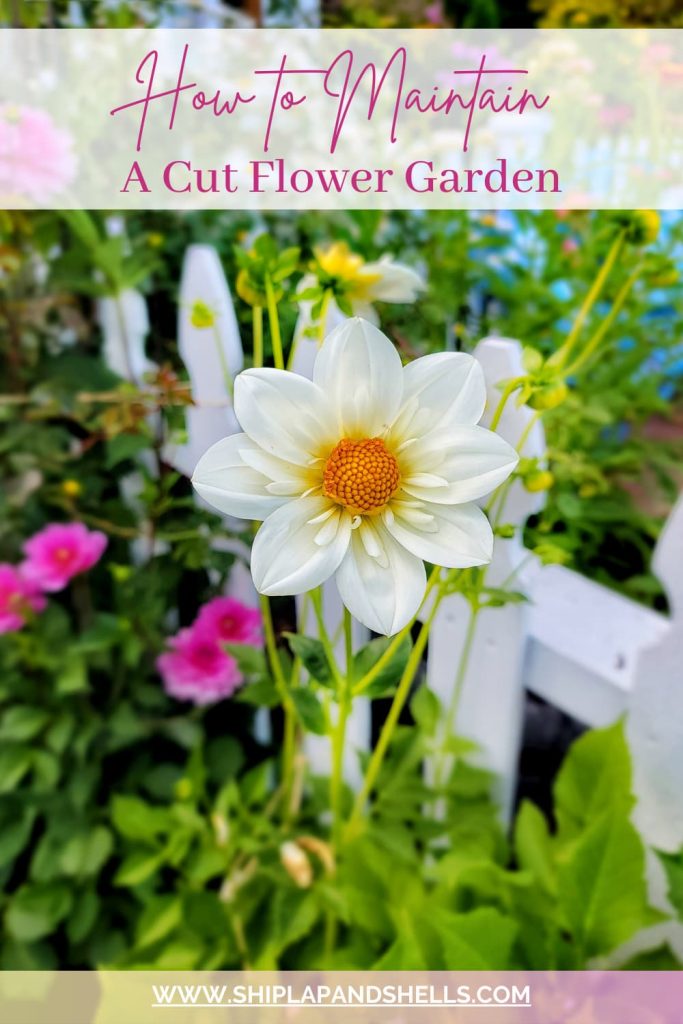
|


